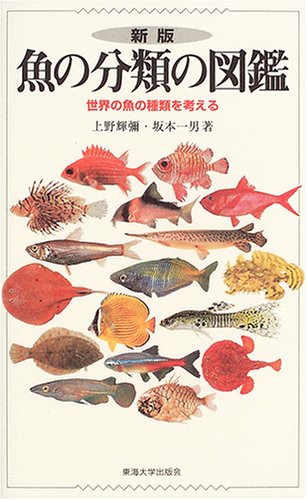- 著者
- 上野 輝彌 坂本 治 関根 浩史
- 出版者
- 埼玉県立自然の博物館
- 雑誌
- 埼玉県立自然史博物館研究報告 (ISSN:02885611)
- 巻号頁・発行日
- no.7, pp.73-85, 1989-03-01
4 0 0 0 OA 鳥取市国府町宮下産の中新世浅海性魚類化石(フォト)
1 0 0 0 OA メダカOryzias latipesの骨学的研究
- 著者
- 籔本 美孝 上野 輝彌
- 出版者
- 北九州市立自然史・歴史博物館
- 雑誌
- 北九州市立自然史博物館研究報告 (ISSN:0387964X)
- 巻号頁・発行日
- vol.5, pp.143-161, 1984-09-20 (Released:2023-11-24)
Recent studies which drastically changed the systematic position of Oryzias latipes stimulated us to investigate and provide complete osteological illustrations and description of the rice fish which has been one of the most popular fishes in Japan.The important osteological features of Oryzias latipes Temminck et Schlegel include loss of some elements, and specialization in structures related to feeding and sexual dimorphism. Bony elements lost in Oryzias latipes are parietals, prevomer, infraorbital bones, supraorbitals, intercalars, orbitosphenoid, basisphenoid, 1st and 2nd pleural ribs, ectopterygoids, metapterygoids, 1st pharyngobranchials, upper hypohyals, interhyals, supracleithra, mesocoracoids. Morphological specializations include sexual dimorphism in tooth forms: teeth are larger and fewer in male with robust teeth at the posterior end of the premaxillary. Branchial skeletons have special enlargement of 3rd pharyngobranchials and pharyngeal bones. Number of vertebrae is 27–30 with 11–12 abdominal and 16–18 caudal vertebrae.
1 0 0 0 魚の分類の図鑑 : 世界の魚の種類を考える
- 著者
- 上野輝彌 坂本一男著
- 出版者
- 東海大学出版会
- 巻号頁・発行日
- 2005
1 0 0 0 OA 日本で初記録のイレズミコンニャクアジ成魚について
- 著者
- 久保 田正 上野 輝彌
- 出版者
- The Ichthyological Society of Japan
- 雑誌
- 魚類学雑誌 (ISSN:00215090)
- 巻号頁・発行日
- vol.18, no.1, pp.51-54, 1971-06-15 (Released:2010-06-28)
- 参考文献数
- 11
Young specimens of Icosteus aenigmaticus Lockington have been reported from several places in Japan.All of these specimens were less than 326 mm in total length and were described as deep-bodied, having blotches on body, pelvic fins, and rounded posterior margin of the caudal fin.The specimen reported here is a mature male collected from Suruga Bay, : Shizuoka Prefecture, on March 15, 1970.The total length is 950 mm.The body color before fixation was dark brown and the pelvic fin is absent.The posterior margin of the caudal fin is lunate.The characters of this specimen match well with those of the specimen described as Acrotus willoughbyi Bean, which has been considered to be a junior synonym of Icosteus aenigmaticus.The appearance of the specimen in Suruga Bay is probably related to the appearance of unusually cold water masses off the coast of southern Japan on the Pacific side.
1 0 0 0 埼玉県秩父盆地中期中新世サバ科魚類の1新種, チチブサワラ
- 著者
- 上野 輝彌 坂本 一男 坂本 治
- 出版者
- 国立科学博物館
- 雑誌
- Bulletin of the National Science Museum. Series C, Geology & paleontology (ISSN:0385244X)
- 巻号頁・発行日
- vol.20, no.4, pp.149-155, 1994-12
A fossil scombrid fish from the Middle Miocene Nagura Formation, Chi-chibumachi Group, Saitama Prefecture, Japan, previously reported as Scomberomorus sp. is now described as a new species S. chichibu. This was determined based on the following characters : the temporal ridge reaching to the level of the posterior end of the ethmoid; a wide, short fenestra between the frontals (the ratio of its width to length is about 1 : 3); and the moderately forked anterior portion of the ethmoid.
- 著者
- 藤井 英一 上野 輝彌 島口 天
- 出版者
- 国立科学博物館
- 雑誌
- 国立科学博物館研究報告 C類 地質学・古生物学 (ISSN:18819079)
- 巻号頁・発行日
- vol.33, pp.89-93, 2007-12
A fossil barbourisiid whalefish collected beside the Arakawa River, Aomori City, and believed to be from the Middle Miocene Wadagawa Formation, is described as a new genus and species, Miobarbourisia aomori in the family Barbourisiidae. The genus Miobarbourisia is more primitive to other whalefishes (including Barbourisia) in having large, long pelvic fins, a more anterior dorsal fin and an anal fin far behind the origin of the dorsal fin. This specimen is the first whalefish fossil discovered worldwide.
- 著者
- 上野輝彌 坂本一男編著・監修
- 出版者
- 日本水産株式会社
- 巻号頁・発行日
- 2011



